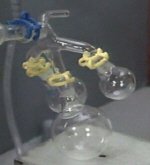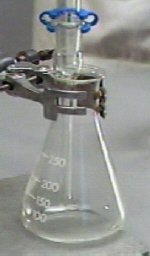A container with a neck and usually made from Pyrex glass. It can be flat bottomed or round bottomed. Round bottomed flasks need to be supported by a clamp or placed on a cork ring. If the neck comprises a ground glass joint, the flask is commonly known as a Quickfit flask.
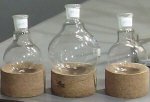
Ballast
flask
Büchner flask
Collecting flask
Dewar flask
Digestion flask
Graduated flask
Kjeldahl flask
Pear shaped flask
Receiving flask
A flask placed between the pump and the vacuum line in order to prevent oil sucking back from the pump into the line in the event of an accident with the vacuum line.
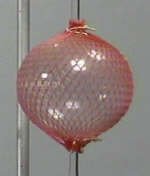
A thick walled conical flask equipped with a side arm tube used in reduced pressure filtration.
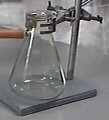
A flask or an erlen used to collect liquids during a digestion or a filtration procedure.
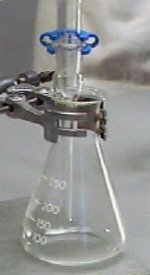

A double walled vessel made out of silver plated glass or stainless steel with a the vacuum between the two walls.
Such a vessel makes it possible to store and transport materials at very low temperatures, e.g. liquid nitrogen which boils at 77K (-195°C).
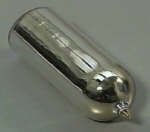
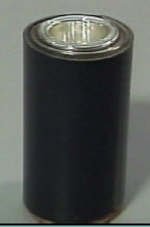
A flask used in the Kjeldahl method for the determination of nitrogen.
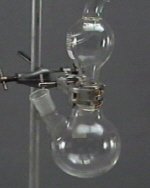
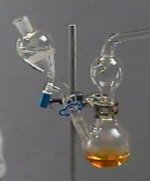
A flask with a long cylindrical neck on which is engraved a mark corresponding to a precise volume. Graduated flasks are used to prepare solutions for analytical work, e.g. titrations, and to carry out accurate dilutions of stock solutions.
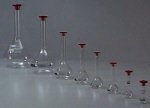
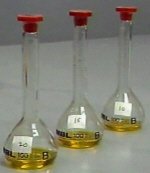
A flask used for semi-micro distillation.

A flask used in the Kjeldahl method for the determination of nitrogen.

A flask or an erlen used to collect liquids durind a distillation, an extraction or a digestion procedure.

